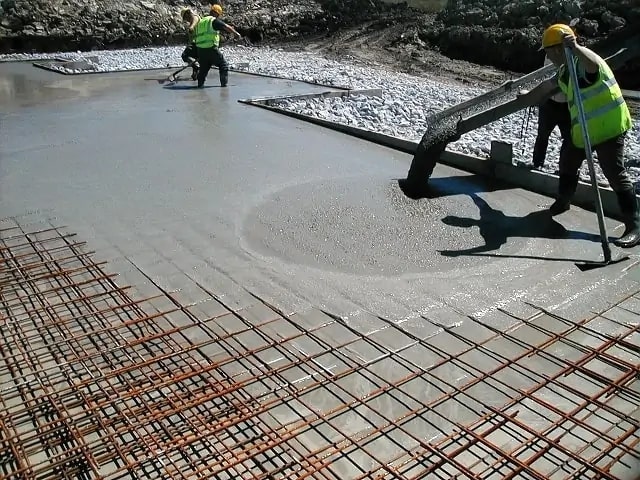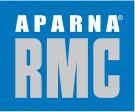Build Better and Faster: Understanding Self-Compacting Concrete (SCC) and Smart Dynamic Concrete (SDC)

September 6, 2024
In the fast-evolving world of construction, speed, efficiency, and quality are paramount. As demands for more durable, cost-effective, and environmentally friendly structures increase, so does the need for innovative building materials. Enter Self-Compacting Concrete and Smart Dynamic Concrete—two advanced concrete technologies engineered to improve the construction process. Whether you’re working on high-rise buildings, bridges, or projects with congested reinforcements, Self-Compacting Concrete and Smart Dynamic Concrete offer solutions that can help you build better and faster.
Introduction to Self-Compacting Concrete and Smart Dynamic Concrete
Both Self-Compacting Concrete and Smart Dynamic Concrete are groundbreaking materials designed to improve the efficiency of concrete placement by eliminating the need for mechanical vibration, which has traditionally been a cumbersome, time-consuming, and labor-intensive process. These technologies flow easily and self-consolidate without external intervention, allowing for high-quality finishes in structures with complex geometries.
Self-Compacting Concrete was developed in the late 1980s to address the challenges of poor consolidation in densely reinforced structures, while Smart Dynamic Concrete is a more recent innovation aimed at further optimizing concrete performance, especially in terms of cost and material use. Both technologies have become highly relevant in modern construction, particularly in areas where space is restricted, and precise, aesthetic finishes are required.
A deep dive into Self-Compacting Concrete (SCC)
Definition of Self-Compacting Concrete
Self-compacting concrete is a highly flowable concrete that spreads and fills molds under its own weight, eliminating the need for mechanical vibration. This innovative material achieves full compaction even in the most congested areas of reinforcement, ensuring a high level of durability and surface finish quality.
Key Features of Self-Compacting Concrete
1.High Deformability and Fluidity:
Self-Compacting Concrete is designed to have excellent fluidity, which means it can flow easily into tight spaces, around dense reinforcements, and into complex moulds.
2. Resistance to Segregation:
Despite its high fluidity, Self-Compacting Concrete maintains homogeneity, preventing the separation of aggregates and other components during flow.
3. Versatility:
Self-compacting concrete excels in filling molds with intricate geometries, making it ideal for projects with complex designs.
Applications of Self-Compacting Concrete
Due to its unique properties, Self-Compacting Concrete is used in a variety of applications where traditional concrete might struggle to deliver optimal results. Some common uses include:
- High-rise Buildings: The reduced need for vibration allows for faster construction in projects where multiple floors must be cast quickly and with minimal disruption.
- Bridges: Self-compacting concrete’s fluidity enables it to fill intricate structural elements in bridges, especially in areas that are difficult to access with conventional concrete.
- Confined Spaces: When working in tight areas where mechanical vibration tools cannot reach, Self-Compacting Concrete provides a solution for achieving full compaction.
- Aesthetic Surfaces: Its smooth finish makes Self-Compacting Concrete ideal for exposed concrete surfaces that require visual appeal, such as architectural facades or decorative elements.
Advantages of Self-Compacting Concrete
- Reduced Labor Costs: By eliminating the need for mechanical vibration, Self-Compacting Concrete significantly reduces the amount of labor and equipment required during the construction process.
- Improved Surface Quality: Because Self-Compacting Concrete is self-leveling, it produces a smoother surface, which minimizes the need for additional finishing work.
- Faster Placement and Reduced Construction Time: The ease of placement and rapid setting properties of Self-Compacting Concrete allow for quicker project completion, reducing overall construction timelines.
Understanding Smart Dynamic Concrete (SDC)
Definition of Smart Dynamic Concrete
Smart Dynamic Concrete is another self-consolidating concrete technology that self-levels and achieves high density and strength through the use of advanced admixtures and optimized mix designs. Unlike Self-Compacting Concrete, which focuses more on fluidity and surface finish, Smart Dynamic Concrete is designed to provide additional benefits in terms of strength, cost-efficiency, and reduced paste content.
Key Features of Smart Dynamic Concrete
- Self-Consolidating Without Vibration:
Like Self-Compacting Concrete, Smart Dynamic Concrete does not require mechanical vibration, making it highly efficient for modern construction needs.
- 20mm Aggregates for Mix Optimization:
Smart Dynamic Concrete incorporates larger aggregates (typically around 20mm), which contribute to better mix optimization and reduce the amount of paste required in the mix. This helps lower the overall material costs while maintaining structural integrity.
- Higher Strength, Density, and Durability:
Smart Dynamic Concrete generally outperforms Self-Compacting Concrete in terms of compressive strength, density, and long-term durability. This makes it particularly suitable for projects where these properties are critical.
Applications of Smart Dynamic Concrete
Smart Dynamic Concrete is favored in projects where cost-efficiency and strength are prioritized. Common applications include:
- Projects Requiring Lower Paste Content: In large-scale projects where reducing the binder content can lead to substantial cost savings, Smart Dynamic Concrete is an excellent choice. It provides high strength and durability with a more efficient use of materials.
- Partial Compaction Projects: For projects where complete compaction is not necessary, Smart Dynamic Concrete can still offer sufficient performance, reducing the need for excessive material use and labor.
- Cost-Effective Solutions: Smart Dynamic Concrete is often used in situations where both performance and budget are concerns. Its optimized mix design makes it an affordable yet robust option for many construction projects.
Advantages of Smart Dynamic Concrete
- Cost Efficiency: By reducing the binder content in the mix, Smart Dynamic Concrete helps lower material costs, making it a more affordable option for large-scale or cost-sensitive projects.
- Greater Durability: Smart Dynamic Concrete’s optimised mix design and higher density make it more durable, with improved resistance to environmental stressors such as fire, freeze-thaw cycles, and chemical exposure.
- Strength and Performance: With superior compressive strength compared to Self-Compacting Concrete, Smart Dynamic Concrete is ideal for structural elements that demand high performance.
Choosing Between Self-Compacting Concrete and Smart Dynamic Concrete
The choice between Self-Compacting Concrete and Smart Dynamic Concrete depends on the specific requirements of the project. If your primary concern is ease of placement, high deformability, and achieving a smooth, aesthetic finish, Self-Compacting Concrete is likely the better choice. Its ability to flow into tight spaces and around dense reinforcements makes it ideal for complex structures and confined areas.
On the other hand, if your project demands a material that offers high strength, density, and durability at a lower cost, Smart Dynamic Concrete might be more appropriate. Its optimised mix design ensures you get the performance needed without overextending your budget, making it an attractive option for larger projects or those with stringent performance requirements.
Conclusion
As construction technology continues to advance, materials like Self-Compacting Concrete and Smart Dynamic Concrete are transforming the way we build. These innovative solutions not only improve the speed and efficiency of construction but also enhance the durability and quality of finished structures. Whether you choose Self-Compacting Concrete for its aesthetic benefits or Smart Dynamic Concrete for its strength and cost efficiency, both offer substantial advantages that can help you build better and faster in today’s competitive construction landscape.
Here at Aparna RMC, we are at the forefront of ready-mix concrete production, producing over 1.8 million cubic metres per year. Our reach expands across locations in Telangana, Andhra Pradesh, Karnataka and Maharashtra and we are dedicated to helping bring a deeper understanding of these advanced concrete so you can make more informed decisions, optimise your project outcomes, and meet the evolving demands of modern construction.Read more: Innovation in Construction: Revolutionizing Construction with Self-Compacting Concrete
